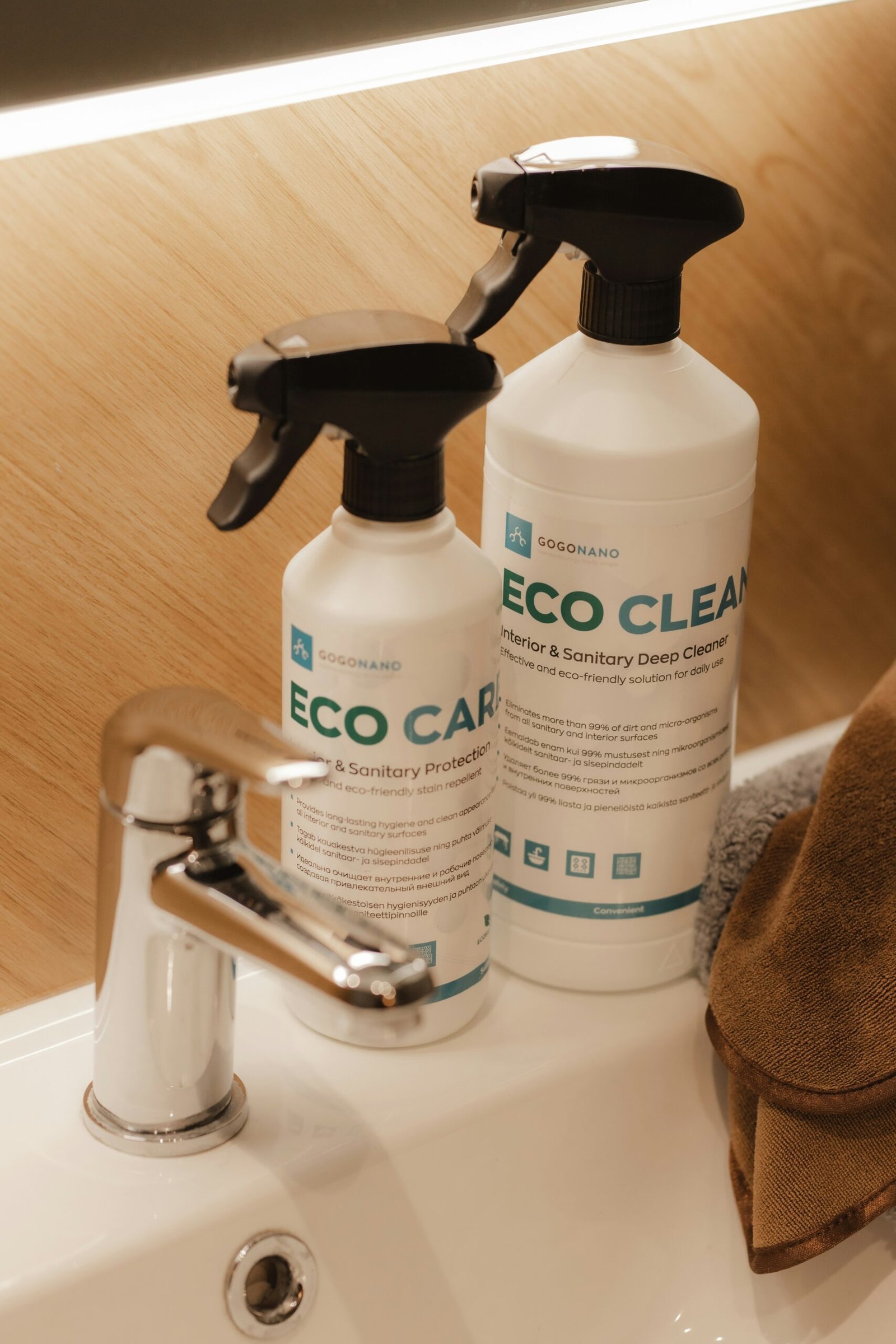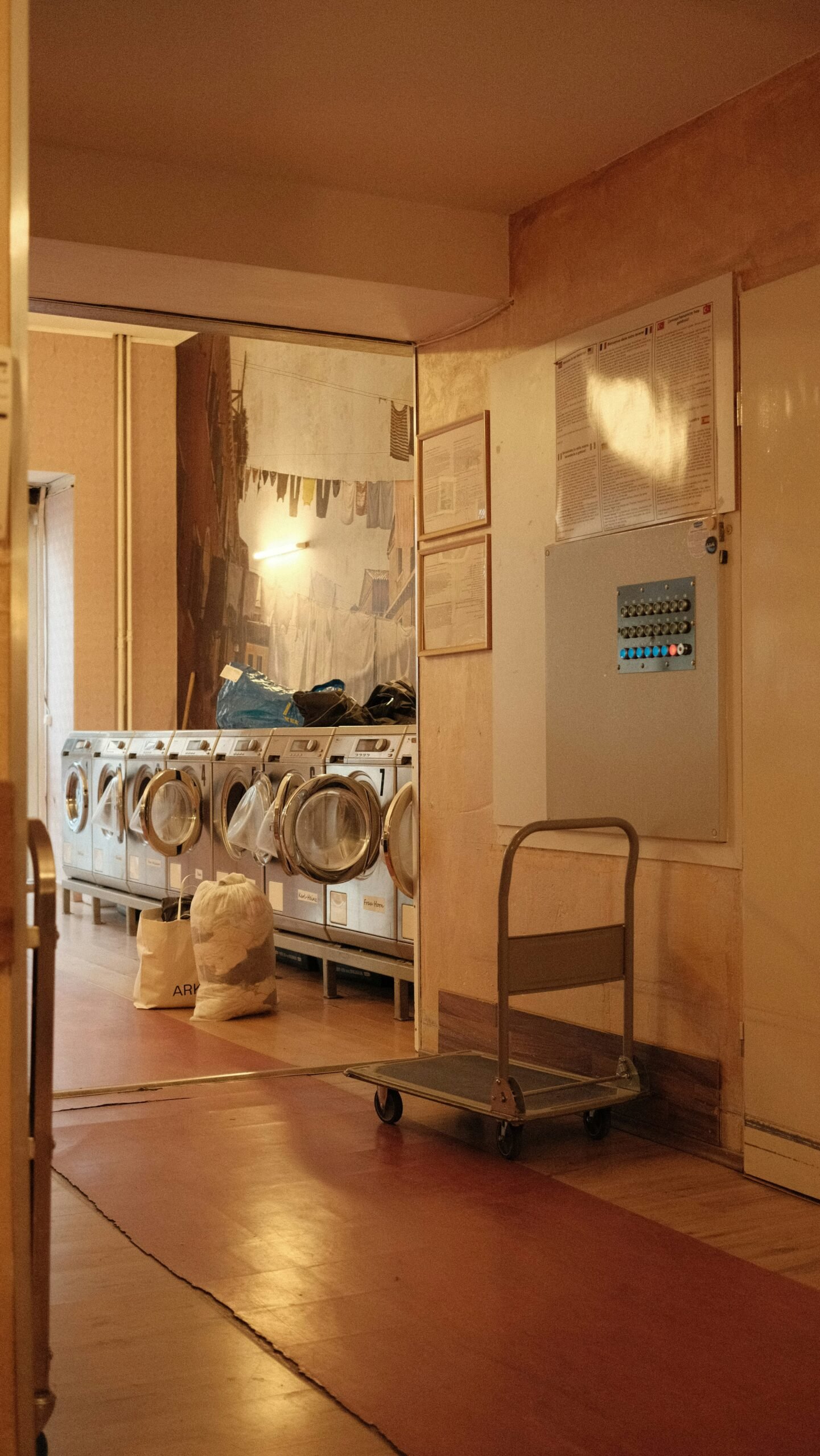
Understanding Allergens: The Culprits Behind Allergies
Allergens are substances that can trigger allergic reactions, leading to symptoms that range from mild discomfort to severe health issues. Among the most common allergens found in homes are dust mites, household dust, and pet dander. Each of these allergens plays a significant role in exacerbating allergies and asthma, particularly in sensitive individuals.
Dust mites are microscopic organisms that thrive in warm, humid environments, often residing in bedding, upholstered furniture, and carpets. These tiny pests feed on human skin flakes and reproduce rapidly, causing their populations to grow quickly if left unchecked. When disturbed, dust mites can become airborne, leading to inhalation and subsequent allergic reactions. Common symptoms of dust mite allergies include sneezing, nasal congestion, and itchy, watery eyes.
Household dust is another major allergen, comprising a complex mixture of substances, including dead skin particles, fabric fibers, pollen, mold spores, and other organic materials. This accumulation of dust can irritate the respiratory system, particularly for those with pre-existing conditions such as asthma. Symptoms associated with dust allergies are similar to those triggered by dust mites and may worsen in poorly ventilated areas or during cleaning activities that stir up settled dust.
Pet dander, comprised of tiny flakes of skin, hair, and saliva from animals, serves as yet another significant allergen. Although the presence of pets can offer companionship and joy, their dander can provoke allergic responses in sensitive individuals. Symptoms from pet dander may include coughing, wheezing, and skin irritations. It is crucial for pet owners to recognize the impact of dander on allergy sufferers and to implement appropriate cleaning strategies to minimize exposure.
Addressing these allergens in the home is vital for maintaining health and comfort. Regular cleaning, using air purifiers, and implementing preventive measures can significantly reduce the presence of dust mites, household dust, and pet dander, thus improving overall indoor air quality and reducing allergy symptoms.
The Role of Dust Mites: What You Need to Know
Dust mites, scientifically known as Dermatophagoides, are microscopic pests that thrive in environments where humans and animals reside. These minuscule creatures primarily feed on organic matter such as dead skin cells, which are plentiful in typical households. Consequently, they tend to inhabit areas with higher concentrations of human activity, such as bedrooms, living rooms, and upholstery. It is estimated that dust mites can be found in nearly 80% of homes, with an average of up to 2,000 dust mites per gram of dust.
The life cycle of a dust mite consists of several stages: egg, larva, nymph, and adult. A female dust mite can lay up to 100 eggs in her lifetime, and under optimal conditions—characterized by humidity levels between 70-80% and temperatures around 20-25°C (68-77°F)—these eggs can hatch within about 3 weeks. Once hatched, the larvae develop into nymphs, eventually becoming adult mites capable of reproduction in just a few weeks. This fast reproductive rate exacerbates their presence in homes, making it difficult for allergy sufferers to manage their symptoms.
The primary concern associated with dust mites stems from their waste products, particularly when they die or excrete. These particles become airborne and can trigger allergic reactions such as sneezing, runny noses, and even asthma attacks in sensitive individuals. Research indicates that approximately 20 million Americans suffer from dust mite allergies, which can severely disrupt their quality of life. The unique challenges posed by dust mites include their resilience and adaptability, making conventional cleaning methods less effective in completely eliminating their population.
To effectively combat the presence of dust mites, allergy sufferers must be aware of their habitats and take proactive steps to reduce exposure. Implementing targeted cleaning strategies can help mitigate allergen levels in the home, fostering a healthier living environment for those affected.
Creating an Allergy-Friendly Environment: Initial Steps
To effectively combat dust mites and allergens at home, the first step is to create an allergy-friendly environment. This involves several practical measures that reduce the level of allergens present in your living space. A fundamental strategy is decluttering your home. Excess items, such as books, knick-knacks, and unnecessary furniture, can harbor dust and make cleaning more challenging. By reducing clutter, you not only remove potential allergen sources but also create a more serene living space that is easier to maintain.
In addition to decluttering, the selection of furniture and fabrics plays a pivotal role in minimizing allergies. Opting for allergy-friendly materials can significantly decrease the likelihood of dust accumulation. Look for furniture made from non-porous materials, such as leather or synthetic fibers, which are easier to clean and less likely to hold on to dust and allergens. Moreover, consider purchasing items with smooth surfaces that do not trap dust as easily as textured surfaces. When it comes to bedding, pillows, and upholstery, utilizing hypoallergenic options can also provide a substantial benefit for allergy sufferers.
Choosing suitable cleaning products is another critical step in reducing indoor allergens. Many traditional cleaning agents contain harsh chemicals that may exacerbate allergies, so it is prudent to opt for hypoallergenic cleaning products instead. These products are designed to minimize allergic reactions and effectively eliminate dust and allergens from your home. Furthermore, incorporating regular cleaning practices, such as washing removable covers and regularly vacuuming carpets with a HEPA-filter vacuum, can help maintain an allergy-friendly environment.
By employing these initial measures—decluttering, carefully selecting furniture and fabrics, and using appropriate cleaning products—it is possible to create a living space that significantly reduces allergens and enhances comfort for allergy sufferers.
Effective Cleaning Strategies to Reduce Dust and Allergens
Maintaining a clean home is crucial for allergy sufferers, particularly in managing dust and allergens. To achieve this, adopting effective cleaning strategies can significantly reduce allergen levels indoors. One of the most beneficial approaches involves the use of vacuum cleaners equipped with HEPA (High-Efficiency Particulate Air) filters. These filters effectively trap tiny particles, including dust mites, pollen, and pet dander. It is recommended to vacuum floors and carpets at least once a week, paying special attention to areas that may accumulate dust easily, such as under furniture and along baseboards.
In addition to vacuuming, dusting surfaces using damp cloths can prevent dust from becoming airborne. Using microfiber cloths is particularly effective as they attract and trap dust particles better than traditional rags. It is advisable to dust surfaces regularly—ideally weekly—focusing on high-touch areas such as light fixtures, shelves, and electronic devices. Special attention should be paid to items that are often overlooked, such as blinds and ceiling fans, where dust can accumulate over time.
Another critical aspect is maintaining a cleaning schedule that incorporates both daily and weekly tasks. Daily tasks may include wiping down kitchen counters and tables, while weekly tasks could involve more intensive cleaning activities such as washing bedding in hot water to eliminate dust mites. Additionally, utilizing air purifiers with HEPA filters can improve indoor air quality significantly. Placing them in commonly used areas can help capture airborne allergens effectively.
Finally, it is essential to monitor humidity levels in the home. Dust mites thrive in environments with high humidity, so using dehumidifiers in damp areas can help keep these levels manageable. By integrating these cleaning strategies and routines into daily life, allergy sufferers can create a healthier living environment and significantly reduce their exposure to dust and allergens.
Bedding and Upholstery: Critical Areas for Allergens
Bedding and upholstery are two of the most common areas where allergens accumulate, making them critical focal points for individuals suffering from allergies. Dust mites, pet dander, and other allergens thrive in these environments, necessitating a proactive approach to cleaning and maintenance.
To effectively combat allergens in bedding, it is advisable to wash bed linens, including sheets, pillowcases, and blankets, in hot water (at least 130°F or 54°C) once a week. This temperature is essential in eliminating dust mites and other allergenic substances. Furthermore, consider investing in hypoallergenic bedding materials. Products made from natural fibers such as cotton or bamboo are not only breathable but also reduce the likelihood of dust mite infestations.
An essential component of allergen prevention is the use of mattress encasements. Encasements designed specifically to ward off dust mites create a barrier between allergens and the sleeper. These protective covers should be tightly woven and fit snugly around the mattress and pillows. Regularly washing these encasements following the manufacturer’s recommendations helps maintain a dust-free sleep environment.
Upholstered furniture also requires special attention. Regular vacuuming using a vacuum cleaner equipped with a HEPA filter is critical, as it helps trap allergens effectively. Deep cleaning these items every six months with steam cleaning or consulting with a professional cleaning service can also significantly reduce the allergen load. When selecting new upholstered pieces, opt for materials that are less likely to contribute to allergic reactions, such as leather or tightly woven fabrics.
The importance of establishing a routine cleaning cycle cannot be overstated. Consistency is key in maintaining a low-allergen environment. By focusing on these critical areas in the home, allergy sufferers can significantly alleviate their symptoms and enhance their overall quality of life.
The Importance of Air Quality: Ventilation and Humidity Control
Air quality plays a pivotal role in managing allergens and improving the overall health of allergy sufferers. One of the primary contributors to indoor air quality is ventilation, which involves the exchange of indoor air with outdoor air. Proper ventilation helps dilute indoor pollutants, including dust mites, pet dander, and mold spores, thus significantly reducing airborne allergens. To enhance ventilation, homeowners can open windows, use exhaust fans in kitchens and bathrooms, and consider mechanical ventilation systems that actively circulate air.
Another essential factor is humidity control. Dust mites thrive in environments with high humidity; ideally, relative indoor humidity levels should be kept between 30% to 50%. High humidity conditions not only support dust mite proliferation but also encourage mold growth, both of which can trigger allergic reactions. To maintain optimal humidity levels, utilizing dehumidifiers in damp areas, such as basements or bathrooms, can be beneficial. Additionally, proper insulation and ensuring that exhaust fans are operating efficiently can prevent moisture buildup.
Air purifiers equipped with HEPA filters can further improve air quality by trapping microscopic allergens that are otherwise difficult to eliminate. When selecting an air purifier, consumers should consider the size of their living space and the specific allergens they are most sensitive to, allowing for targeted air filtration. It is essential to consistently monitor and maintain air purifying devices since dust accumulation can reduce their efficiency.
By focusing on ventilation, humidity control, and effective air purification, individuals can significantly reduce the presence of allergens in their homes. These practices contribute to a healthier indoor environment, ultimately leading to fewer allergy symptoms and improved quality of life for those affected by seasonal and perennial allergies.
Managing Pet Dander: Tips for Pet Owners
For pet owners, managing pet dander is a crucial aspect of maintaining a healthy home environment, especially for individuals susceptible to allergies. The first step in effective pet dander management involves regular grooming. It is recommended to brush pets outdoors frequently, ideally at least once a week, to reduce the accumulation of loose fur and dander within the home. Bathing pets on a monthly basis with hypoallergenic shampoos can also aid in minimizing dander levels, as it helps remove allergens from the skin and coat.
When it comes to cleaning routines, using an air purifier equipped with a HEPA filter can significantly improve indoor air quality by trapping pet dander and other allergens. Regular vacuuming with a vacuum cleaner designed to capture pet hair and dander is essential; it is advisable to do this at least twice a week. Additionally, it is beneficial to wash pet bedding and toys in hot water every two weeks to eliminate dander buildup. Keeping pets out of certain rooms, particularly bedrooms, can also create allergen-free zones that improve comfort for allergy sufferers.
Training pets can further assist in controlling allergen exposure. Teaching pets to stay off furniture and designated areas can limit dander spread throughout the home. Furthermore, if looking for a new pet, consider hypoallergenic breeds known for producing fewer allergens. Breeds such as Poodles, Bichon Frises, and Maltese are often recommended for allergy sufferers as they tend to shed less fur and thus produce less dander. By implementing these strategies, pet owners can effectively manage pet dander, ensuring a healthier and more comfortable living space for all household members.
Regular Cleaning vs. Deep Cleaning: Finding a Balance
For individuals suffering from allergies, maintaining a clean living environment is essential to minimize exposure to dust mites and various allergens. Both regular cleaning and deep cleaning play crucial roles, but they serve different purposes and should be incorporated into a comprehensive cleaning strategy.
Regular cleaning routines, often performed weekly, include basic tasks that help maintain a tidy and allergen-free space. These tasks typically involve dusting surfaces, vacuuming carpets and rugs, mopping hard floors, and washing bed linens. A vacuum cleaner equipped with a HEPA filter is particularly beneficial, as it effectively traps allergens and prevents them from being released back into the air. Additionally, regularly wiping down frequently touched surfaces like countertops and doorknobs can significantly reduce the accumulation of dust and other irritants.
On the other hand, deep cleaning is necessary to address hidden allergens that regular cleaning might miss. This process is generally conducted every few months and focuses on more intensive tasks such as washing curtains, deep cleaning upholstery, and shampooing carpets. It is also important to clean areas that are often overlooked, such as behind large furniture and inside closets. Deep cleaning can eliminate dust mites and allergens that have settled into fabrics and hidden spaces, thus significantly improving air quality.
Establishing a cleaning schedule that incorporates both regular and deep cleaning can be particularly advantageous for allergy sufferers. This balance ensures a consistently clean environment, reduces the burden of deep cleaning tasks, and ultimately enhances overall well-being. By allocating specific times for regular cleaning and establishing a calendar for deep cleaning, individuals can manage their cleaning responsibilities more efficiently and minimize allergic reactions triggered by indoor allergens.
Final Thoughts: Consistency is Key to a Healthier Home
Maintaining a clean and allergen-free environment is crucial for allergy sufferers, and the consistency of cleaning practices plays a pivotal role in this endeavor. It is essential to establish a regular cleaning schedule that prioritizes high-risk areas where dust mites and other allergens tend to accumulate. This includes upholstered furniture, carpets, and textiles, all of which can harbor dust, pet dander, and other irritants. A routine that includes weekly vacuuming with a HEPA-filter-equipped vacuum and frequent laundering of bedding in hot water can significantly reduce allergen levels.
Proactive cleaning habits not only alleviate symptoms but also contribute to long-term health benefits. For those who suffer from allergies, diligence in these practices can create a more comfortable living space. Routine dusting, using allergy-friendly products, and regular maintenance of HVAC systems should not be overlooked, as they substantially contribute to minimizing allergen exposure. Consideration of professional cleaning services may also be prudent for deep cleaning tasks, ensuring that hard-to-reach areas are addressed effectively.
Moreover, educating oneself about the types of allergens present in the home and their sources is beneficial. Readers are encouraged to explore additional resources, such as comprehensive guides on indoor air quality and recommendations for hypoallergenic products. Utilizing such information promotes informed decisions, allowing individuals to enhance their cleaning strategies effectively. The commitment to these measures, along with gradual adjustments to one’s cleaning routine, can culminate in a significant improvement in overall health and well-being.
In conclusion, while it may require effort, establishing a consistent, proactive approach to cleaning is essential for allergy sufferers. Transforming the home into a safe sanctuary from allergens not only alleviates discomfort but also enhances the quality of life. By taking responsibility for their environment, individuals can conquer allergens effectively and enjoy a healthier home life.




